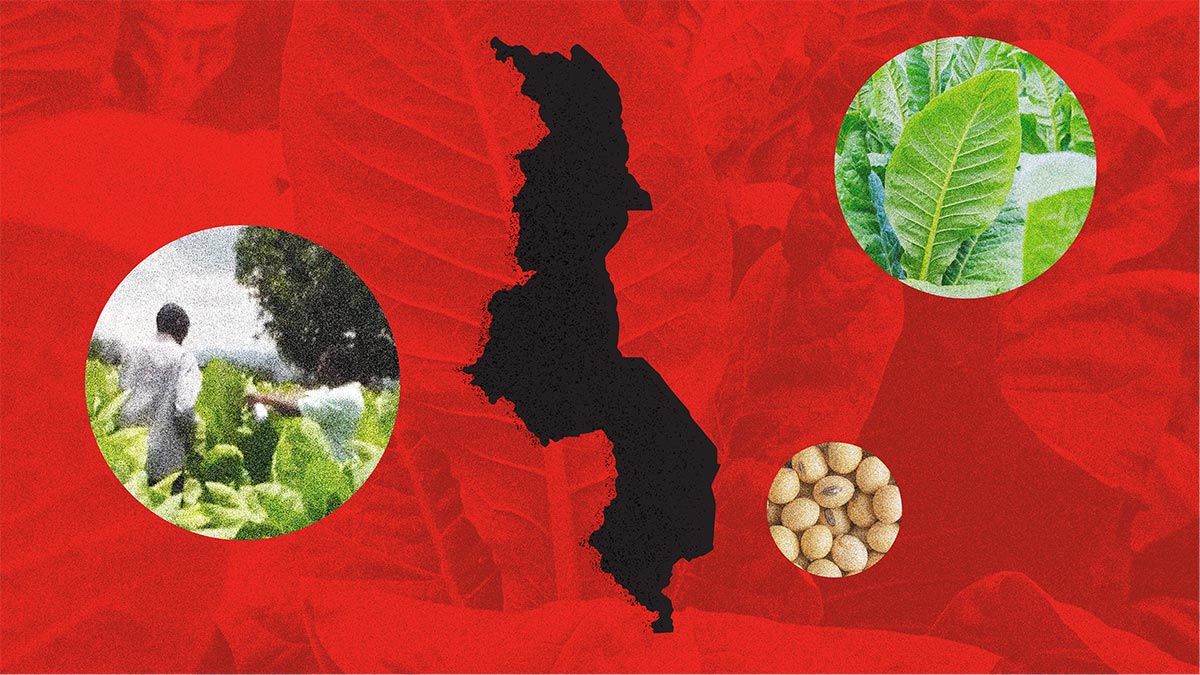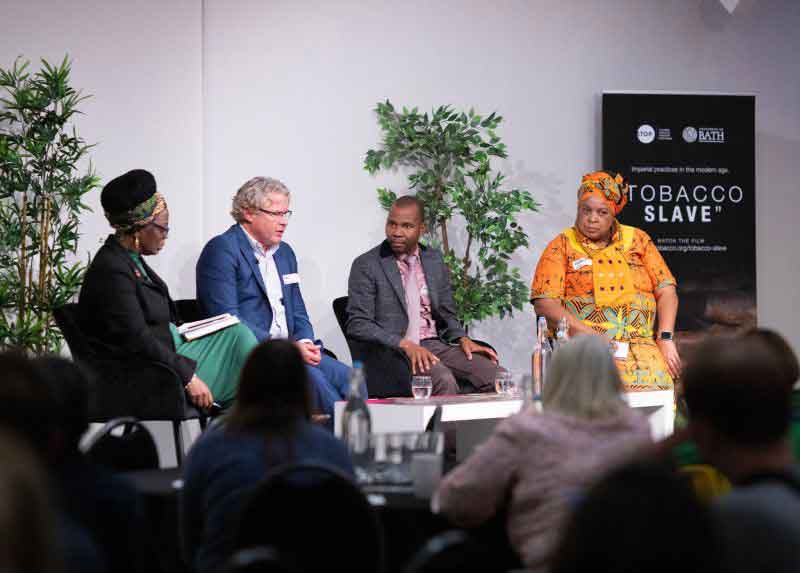- Resources
- News
-
-
Get Email Updates
Sign up for STOP's emails and never miss an update on our latest work and the tobacco industry's activity.
-
Get Funding
Ready to tackle industry interference? You could be eligible for a grant.
-
Share a Tip
Do you have information on tobacco industry misconduct in your country? Let us know.
-
Get Email Updates

On June 15, to mark the World Day Against Child Labor Week of Action, experts from around the world gathered for the “Tobacco Industry and Child Labor” webinar. Hosted by the Global Center for Good Governance in Tobacco Control (GGTC), a partner in STOP; the Convention Secretariat’s Knowledge Hub for Article 5.3; and co-hosted by the Convention Secretariat’s Knowledge Hub for Articles 17 and 18, speakers discussed the urgent problem of child labor in tobacco growing, and solutions that can help end it.
Read these five key takeaways from the experts’ conversations, then watch the full webinar to learn more.
1. For the first time in years, progress to end child labor has stalled.
In her keynote address, Dr. Adriana Blanco Marquizo, Head of the FCTC Convention Secretariat, shared new data from the International Labour Organization and UNICEF that shows the reduction of child labor over the past four years has slowed, for the first time since 2000. There are currently an estimated 160 million children worldwide involved in child labor, with an estimated 1.3 million children working in the tobacco sector.
Country-level statistics further illustrate the severity of the problem. Rita Surita of Fiocruz shared that in Brazil, about 80,000 children between ages nine and 17 work in tobacco farming. In Zambia, child labor in tobacco growing spreads across more than 20 districts, with some children starting as early as five years old, said Brenda Chitindi of the Tobacco Free Association of Zambia. Margianta S.J.D. of Emancipate Indonesia said there are an estimated 4 million child laborers in Indonesia, with 58% of those in farming, including in tobacco fields. And Farida Akhter of UBINIG Bangladesh shared that 50-70% of the workers in bidi factories are children below the age of 14.
2. For children, the harms stack up.
The most immediate consequences of children working for the tobacco industry are the health harms. Human Rights Watch’s Margaret Wurth shared heartbreaking stories of farmers and children working in tobacco growing: A 13-year-old in Indonesia recalled vomiting every year during the harvest; in the United States, a 12-year-old wore only a black plastic garbage bag as protective gear while working in the tobacco fields; and a farmer in Zimbabwe dreamt of making enough money to hire farmers, so his kids could go to school and not become ill working on the farm. Wurth recalled that the symptoms she’s heard time and time again are consistent with nicotine poisoning, which include nausea, vomiting, headaches and dizziness.
Child labor in tobacco growing also robs children of a full education. When children are working in tobacco fields, they aren’t in school. Akhter shared that around two-thirds of the children in the tobacco growing regions of Bangladesh cannot attend school.
3. Poverty is the main driver of child labor in tobacco growing.
Dr. Blanco Marquizo laid out a clear discrepancy: While some tobacco executives receive salaries (and additional benefits) worth many millions of dollars, many tobacco farmers are living on poverty wages.
Akhter summarized a common thread across the presentations: Tobacco farmers are often made to become dependent on tobacco companies through loans. Chitindi explained that tobacco farmers usually obtain credit from tobacco companies, and to pay it back, have to grow more tobacco than they can manage—which can lead to using child labor. She added that tobacco companies have to pay higher prices for tobacco leaf, so farmers can afford to hire additional adult workers.
4. The ECLT and other forms of so-called CSR are counterproductive to ending child labor.
As Margianta S.J.D. put it, the tobacco industry’s use of so-called corporate social responsibility (CSR) activities leads to the “same old, same old.” In other words, when tobacco companies create programs or organizations to address child labor, they can claim to be part of the solution without having to make any meaningful changes.
The Eliminating Child Labour in Tobacco Growing (ECLT) Foundation is a major CSR tool of the tobacco industry, according to OxySuisse’s Pascal Diethelm. Though the ECLT advertises that it was founded as an independent Swiss foundation in 2000, he showed that by 2001, the ECLT was receiving funding from British American Tobacco (BAT) and the International Tobacco Growers’ Association, which is also backed by tobacco companies. Further, he pointed out that representatives from each of the Big Four (BAT, Philip Morris International, Japan Tobacco International and Imperial Brands) each have a permanent seat on the Foundation’s board.
Dr. Bronwyn King of Tobacco-Free Portfolios described how the tobacco industry is also weaponizing CSR in its ESG (environmental, social and governance) reporting. Tobacco companies may get better ESG ratings—and therefore attract certain investors and improve their reputation—by holding ESG events, creating glossy reports and exploiting flawed reporting methodologies.
5. There are tobacco-industry-free solutions.
One tool available, as Dudley Tarlton of the UN Development Programme explained, is social impact bonds. He described a social impact bond currently in development that, if objectives are met, could help more than 7,000 Zambian farmers who want to transition away from growing tobacco to do so. Families who transition away from tobacco could see a 70% increase in household resources, and the feasibility study showed that around 17,000 hectares or forest would be protected.
A globally recognized solution is the implementation of the World Health Organization (WHO) Framework Convention on Tobacco Control (FCTC). As Dr. Blanco Marquizo highlighted, Articles 17 and 18 of the FCTC call for support of economically viable alternatives to tobacco growing, and for people and the environment to be protected from the effects of tobacco cultivation and manufacture. Debby Sy of GGTC also noted that Article 5.3 includes safeguards for policies that protect children from child labor in the tobacco sector.
Global experts across sectors coming together is a necessary step in the fight to end child labor in tobacco growing. Any genuine efforts to do so must never include the tobacco industry, which profits from the current labor practices. Watch the full webinar to learn more and see what you can do to help.

